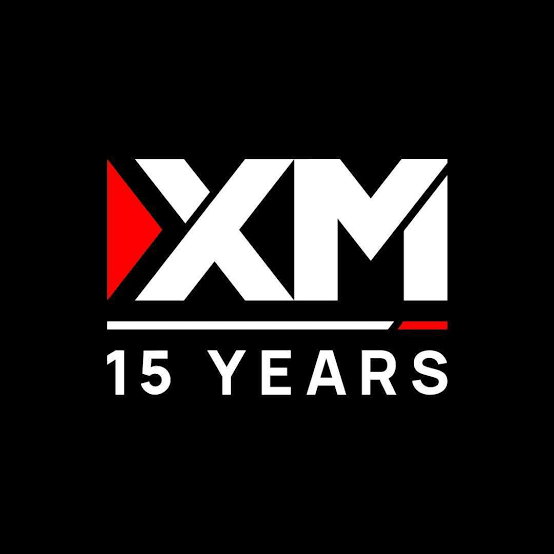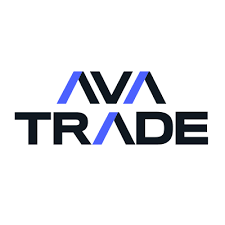Best Derivatives Brokers – Comprehensive Educational Guide
Derivatives trading offers unique opportunities for hedging, speculation, and portfolio diversification. This educational guide explores various derivatives instruments, trading strategies, and compares leading derivatives brokers. Educational content only; practice on demo accounts first.
Recommended Brokers 2025
Educational access and demo-first practice. No investment advice.
Table of Contents
- Recommended Brokers
- Introduction to Derivatives Trading
- Types of Derivatives Instruments
- Comprehensive Broker Comparison
- Derivatives Trading Strategies
- Risk Management in Derivatives
- Trading Platforms and Tools
- Regulation and Safety
- Getting Started with Derivatives
- Advanced Derivatives Concepts
- Common Mistakes to Avoid
- Conclusion and Next Steps
Introduction to Derivatives Trading
Derivatives are financial contracts whose value is derived from an underlying asset, such as stocks, bonds, commodities, currencies, interest rates, or market indices. These instruments enable traders to speculate on price movements, hedge existing positions, and gain exposure to various markets without owning the underlying assets.
What Are Derivatives?
At their core, derivatives are agreements between two parties that specify conditions under which payments are to be made between them. The value of these contracts fluctuates based on the price changes of the underlying asset.
Leverage
Derivatives often allow traders to control large positions with relatively small amounts of capital, amplifying both potential gains and losses.
Hedging
Institutions and individuals use derivatives to protect against adverse price movements in their investment portfolios.
Speculation
Traders can profit from price movements without owning the underlying asset, accessing markets that might otherwise be inaccessible.
Price Discovery
Derivatives markets help establish future prices for assets, providing valuable information to market participants.
Brief History of Derivatives
The concept of derivatives dates back centuries, with early examples found in ancient Mesopotamia where forward contracts for agricultural products were used. Modern derivatives markets began to take shape in the 19th century with the establishment of formal futures exchanges in Chicago. The 1970s saw significant growth with the introduction of financial derivatives, particularly after the collapse of the Bretton Woods system and the resulting increase in currency and interest rate volatility.
The late 20th and early 21st centuries witnessed explosive growth in derivatives trading, driven by financial innovation, globalization, and advances in technology. Today, the derivatives market is one of the largest segments of the global financial system, with notional values exceeding hundreds of trillions of dollars.
Types of Derivatives Instruments
Derivatives come in various forms, each with unique characteristics, risk profiles, and applications. Understanding these different instruments is crucial for effective derivatives trading.
Futures Contracts
Futures are standardized contracts to buy or sell an asset at a predetermined price on a specified future date. These contracts trade on organized exchanges and are marked to market daily.
| Feature | Description | Common Underlyings |
|---|---|---|
| Standardization | Contract terms are standardized by the exchange | All futures contracts |
| Margin Requirements | Initial and maintenance margins required | All futures contracts |
| Daily Settlement | Positions are settled daily (marked to market) | All futures contracts |
| Liquidity | Generally high for major contracts | Stock indices, commodities, currencies |
Options Contracts
Options give the buyer the right, but not the obligation, to buy (call option) or sell (put option) an underlying asset at a specified price (strike price) on or before a certain date (expiration date).
| Option Type | Right | Obligation | Maximum Loss |
|---|---|---|---|
| Call Option (Buyer) | Right to buy underlying | Premium paid | Premium paid |
| Put Option (Buyer) | Right to sell underlying | Premium paid | Premium paid |
| Call Option (Seller) | Premium received | Must sell if assigned | Unlimited |
| Put Option (Seller) | Premium received | Must buy if assigned | Strike price minus premium |
CFDs (Contracts for Difference)
CFDs are popular over-the-counter derivatives that allow traders to speculate on price movements without owning the underlying asset. Profits or losses are determined by the difference between the entry and exit prices.
Leverage
CFDs typically offer high leverage, allowing significant market exposure with relatively small capital.
Diverse Markets
CFDs are available on various assets including stocks, indices, forex, commodities, and cryptocurrencies.
Going Long or Short
Traders can profit from both rising and falling markets with equal ease.
No Expiry
Most CFDs don't have expiration dates, unlike options and futures.
Swaps
Swaps are derivative contracts through which two parties exchange financial instruments, typically cash flows based on different interest rates or currencies. Common types include interest rate swaps, currency swaps, and credit default swaps.
Forwards
Forward contracts are similar to futures but are customized agreements traded over-the-counter (OTC) rather than on exchanges. They are not standardized and typically involve higher counterparty risk.
Educational Insight: Understanding Leverage in Derivatives
Leverage is a double-edged sword in derivatives trading. Consider this example:
With 10:1 leverage, a 1% price move in the underlying asset results in a 10% change in your position value. While this amplifies potential gains, it also magnifies losses. Proper risk management is essential when using leverage.
Always understand the leverage being applied to your positions and ensure your position sizing accounts for potential adverse moves.
Comprehensive Broker Comparison
Choosing the right derivatives broker is crucial for successful trading. This section provides detailed comparisons of leading derivatives brokers, focusing on their offerings, fees, platforms, and regulatory status.
Deriv
Deriv (formerly Binary.com) has evolved from its binary options origins to become a comprehensive derivatives trading platform. They offer a wide range of synthetic indices, forex, commodities, and cryptocurrency derivatives.
| Feature | Details |
|---|---|
| Derivatives Offered | CFDs, options, multipliers, volatility indices |
| Minimum Deposit | $5 (or equivalent) |
| Leverage | Up to 1:1000 (varies by instrument) |
| Trading Platforms | Deriv MT5, Deriv X, Deriv Trader, Deriv Bot |
| Unique Features | Synthetic indices available 24/7, comprehensive API for algorithmic trading |
| Regulation | MFSA, VFSC, FSA, LFSA, FSCA, FSC, FSA, Labuan FSA |
Pros and Cons
Advantages
- Innovative trading platforms
- Synthetic indices for 24/7 trading
- Low minimum deposit
- Comprehensive API for algorithmic trading
- Wide range of derivatives instruments
Considerations
- Regulatory framework varies by entity
- Synthetic instruments carry unique risks
- Platforms may have a learning curve
HFM
HFM (formerly HotForex) is a well-established broker with a global presence, offering comprehensive derivatives trading across multiple asset classes with competitive conditions.
| Feature | Details |
|---|---|
| Derivatives Offered | Forex CFDs, commodity CFDs, index CFDs, stock CFDs, cryptocurrency CFDs |
| Minimum Deposit | $5 for Micro account, $100 for Premium account |
| Leverage | Up to 1:1000 (varies by regulator) |
| Trading Platforms | MT4, MT5, HFM Platform (Web & Mobile) |
| Unique Features | Comprehensive copy trading, VPS services, extensive educational materials |
| Regulation | FCA, CySEC, DFSA, FSCA, FSA, CMA |
Pros and Cons
Advantages
- Multiple regulated entities
- Wide range of account types
- Extensive educational resources
- Copy trading platform available
- Competitive spreads
Considerations
- Inactivity fee after 6 months
- Withdrawal fees for some methods
- Limited product range in some jurisdictions
Exness
Exness is known for its flexible account structures, instant withdrawals, and extensive range of derivatives instruments, particularly in the forex and cryptocurrency spaces.
| Feature | Details |
|---|---|
| Derivatives Offered | Forex CFDs, metal CFDs, cryptocurrency CFDs, energy CFDs, index CFDs, stock CFDs |
| Minimum Deposit | $1 for Standard account, $200 for Pro account |
| Leverage | Up to 1:Unlimited (for small positions), typically 1:2000 for small accounts |
| Trading Platforms | Exness Terminal, MT4, MT5, Exness Trader (mobile) |
| Unique Features | Instant withdrawals, partnership programs, comprehensive analytics tools |
| Regulation | FCA, CySEC, FSC, FSCA, CBCS, FSA |
Pros and Cons
Advantages
- Extremely low minimum deposit
- Very high leverage for small positions
- Instant withdrawal processing
- Multiple account types including Cent accounts
- Comprehensive mobile trading experience
Considerations
- Leverage decreases with larger positions
- Spreads can widen during volatile periods
- Regional restrictions may apply
XM
XM is a globally recognized broker known for its educational resources, customer service, and comprehensive derivatives offerings across multiple asset classes.
| Feature | Details |
|---|---|
| Derivatives Offered | Forex CFDs, CFDs on stocks, indices, commodities, precious metals, energies |
| Minimum Deposit | $5 for Micro account, $100 for Standard account |
| Leverage | Up to 1:888 (for Micro/Standard accounts), up to 1:500 (for EU clients) |
| Trading Platforms | MT4, MT5, XM WebTrader |
| Unique Features | Extensive educational resources, negative balance protection, multilingual support |
| Regulation | ASIC, CySEC, DFSA, FSC, FSCA |
Pros and Cons
Advantages
- Low minimum deposit options
- No re-quotes or rejections
- Negative balance protection
- Extensive educational materials
- Multiple regulated entities
Considerations
- Inactivity fee after 90 days
- Limited cryptocurrency offerings
- Higher spreads on Micro account
AvaTrade
AvaTrade is a well-regulated broker with a strong global presence, offering diverse trading platforms and a comprehensive range of derivatives instruments.
| Feature | Details |
|---|---|
| Derivatives Offered | Forex CFDs, commodity CFDs, index CFDs, stock CFDs, bond CFDs, ETF CFDs, cryptocurrency CFDs, options |
| Minimum Deposit | $100 for retail accounts |
| Leverage | Up to 1:400 (for retail clients outside EU), up to 1:30 (for EU retail clients) |
| Trading Platforms | MT4, MT5, AvaTradeGO, AvaOptions, DupliTrade |
| Unique Features | Options trading platform, copy trading, comprehensive mobile app |
| Regulation | Central Bank of Ireland, ASIC, FSCA, FSA, ADGM, BVI FSC, CySEC |
Pros and Cons
Advantages
- Strong regulatory framework
- Multiple trading platforms including options
- Negative balance protection
- Copy trading available
- Comprehensive educational resources
Considerations
- Higher minimum deposit than some competitors
- Inactivity fee after 3 months
- Limited leverage for EU retail clients
Additional Derivatives Brokers
Beyond the brokers detailed above, several other platforms offer competitive conditions for derivatives trading:
| Broker | Minimum Deposit | Key Derivatives Features | Best For |
|---|---|---|---|
| IC Markets | $200 | Raw spreads, ECN execution, extensive platform support | Serious traders prioritizing execution quality |
| Pepperstone | $200 | Tight spreads, multiple platforms, advanced tools | Active traders, those using advanced strategies |
| FP Markets | $100 | ECN pricing, IRESS platform, ASIC regulation | Traders seeking institutional-grade conditions |
| Plus500 | $100 | User-friendly platform, wide CFD selection | Beginner to intermediate CFD traders |
| IG Markets | $250 | Extensive product range, professional platform | Experienced traders, those needing diverse instruments |
Derivatives Trading Strategies
Successful derivatives trading requires well-defined strategies tailored to market conditions, risk tolerance, and trading objectives. This section explores various approaches to derivatives trading.
Hedging Strategies
Hedging involves using derivatives to reduce or eliminate the risk of adverse price movements in an existing position.
| Strategy | Description | Instruments Used | Risk Level |
|---|---|---|---|
| Protective Put | Buying put options to protect against downside in a long stock position | Put options | Low |
| Covered Call | Selling call options against a long stock position to generate income | Call options | Low to Moderate |
| Futures Hedge | Using futures to lock in prices for commodities or currencies | Futures contracts | Moderate |
| Delta Hedging | Adjusting positions to maintain delta neutrality | Options, underlying asset | Advanced |
Speculative Strategies
Speculative strategies aim to profit from anticipated price movements without necessarily owning the underlying asset.
Directional Trading
Taking positions based on anticipated price direction (long or short) using futures, CFDs, or options.
Volatility Trading
Profiting from changes in volatility rather than directional price moves, typically using options strategies.
Spread Trading
Simultaneously buying and selling related derivatives to profit from price relationships.
Arbitrage
Exploiting price discrepancies between related instruments or markets for risk-free profits.
Options Strategies
Options offer unique strategic possibilities due to their asymmetric risk profiles and multiple dimensions of value (delta, gamma, theta, vega).
| Strategy | Market Outlook | Risk/Reward Profile | Capital Required |
|---|---|---|---|
| Long Call/Put | Bullish/Bearish | Limited risk, unlimited reward | Premium paid |
| Covered Call | Neutral to Bullish | Limited reward, limited risk | Cost of shares |
| Vertical Spread | Bullish/Bearish/Neutral | Limited risk, limited reward | Difference in strikes |
| Iron Condor | Neutral | Limited risk, limited reward | Difference in strikes |
| Straddle/Strangle | Volatile (direction unknown) | Limited risk, unlimited reward | Premium paid |
Educational Insight: The Greeks in Options Trading
Options pricing is influenced by several factors known as "the Greeks":
- Delta: Measures how much an option's price changes for each $1 move in the underlying asset
- Gamma: Measures the rate of change of delta
- Theta: Measures how much an option's price decreases each day due to time decay
- Vega: Measures sensitivity to changes in implied volatility
- Rho: Measures sensitivity to changes in interest rates
Understanding the Greeks helps options traders manage risk and construct more sophisticated strategies.
Risk Management in Derivatives
Effective risk management is crucial in derivatives trading due to the leverage involved and potential for rapid losses. This section explores key risk management principles and techniques.
Position Sizing
Proper position sizing is the foundation of derivatives risk management. It ensures that no single trade can significantly damage your trading capital.
| Method | Calculation | Example ($10,000 account) | Pros & Cons |
|---|---|---|---|
| Fixed Percentage | Risk X% of account per trade | 1% risk = $100 per trade | Simple, adjusts with account balance |
| Fixed Dollar | Risk $X per trade | $200 risk per trade | Consistent risk amount |
| Volatility-Based | Size based on instrument volatility | Position sized so stop loss equals 1 ATR | Adapts to market conditions |
| Kelly Criterion | % = Win% - (Loss% / Win/Loss Ratio) | With 60% win rate and 1:1 ratio = 20% | Mathematically optimal but aggressive |
Stop Loss Strategies
Stop losses are essential for limiting losses on individual trades in derivatives markets where prices can move rapidly.
Fixed Percentage Stop
Placing stops at a fixed percentage away from entry price. Simple but doesn't account for market volatility.
Volatility Stop
Using Average True Range (ATR) or other volatility measures to set stops based on market conditions.
Technical Stop
Placing stops beyond key technical levels like support/resistance or trendlines.
Trailing Stop
Dynamic stop that follows favorable price movements to lock in profits while allowing winners to run.
Portfolio-Level Risk Management
Beyond individual trades, managing risk at the portfolio level is essential for long-term success.
| Technique | Description | Implementation |
|---|---|---|
| Correlation Analysis | Understanding relationships between different positions | Avoid overexposure to correlated instruments |
| Daily Loss Limits | Maximum acceptable loss in a single day | Stop trading after reaching predetermined loss |
| Value at Risk (VaR) | Statistical measure of potential portfolio loss | Calculate maximum expected loss over specified time horizon |
| Stress Testing | Simulating extreme market conditions | Assess portfolio performance during historical crises |
Educational Insight: The Impact of Leverage on Risk
Leverage amplifies both gains and losses in derivatives trading. Consider this example:
With 10:1 leverage, a 10% price move results in a 100% change in your position value. While this means a 10% favorable move doubles your capital, a 10% adverse move wipes out your entire position.
This illustrates why conservative position sizing and strict stop losses are essential when trading with leverage.
Trading Platforms and Tools
The trading platform is your primary interface with derivatives markets. Choosing the right platform and tools can significantly impact your trading experience and results.
MetaTrader Platforms
MetaTrader platforms (MT4 and MT5) are industry standards for retail derivatives trading, offering comprehensive features and extensive customization.
| Platform | Key Features | Derivatives Support | Best For |
|---|---|---|---|
| MetaTrader 4 | User-friendly interface, extensive indicators, EAs | Forex CFDs, CFD trading | Forex and CFD traders |
| MetaTrader 5 | Advanced features, more timeframes, economic calendar | Forex, stocks, futures, options | Traders needing diverse instruments |
cTrader
cTrader is a modern alternative to MetaTrader, known for its clean interface, advanced charting, and superior execution transparency.
Level II Pricing
Access to market depth information for better execution understanding.
Advanced Charting
Comprehensive technical analysis tools with intuitive interface.
cAlgo
Powerful algorithmic trading platform integrated with cTrader.
Copy Trading
Built-in social trading functionality for strategy replication.
Proprietary Platforms
Many brokers offer their own proprietary trading platforms with unique features and integrations.
| Platform | Broker | Key Features | Unique Offerings |
|---|---|---|---|
| Deriv Trader | Deriv | User-friendly, synthetic indices | 24/7 trading on synthetic markets |
| AvaTradeGO | AvaTrade | Mobile-first design, social trading | DupliTrade copy trading integration |
| xStation | XM | Intuitive interface, integrated analysis | Economic calendar with real-time impact assessment |
| HFM Platform | HFM | Web-based, comprehensive tools | Integrated copy trading and analysis |
Essential Trading Tools
Beyond the trading platform itself, various tools can enhance your derivatives trading experience.
Economic Calendar
Track important economic events that can cause increased volatility in derivatives markets.
Volatility Indicators
Tools like ATR, Bollinger Bands, and VIX to measure and anticipate market volatility.
Options Calculators
Calculate theoretical options prices, Greeks, and potential strategy payoffs.
Backtesting Software
Test trading strategies on historical data to assess potential performance.
Regulation and Safety
Understanding broker regulation is essential for protecting your funds and ensuring fair trading conditions in derivatives markets.
Major Regulatory Bodies
Several regulatory bodies are recognized for their stringent oversight of derivatives brokers.
| Regulator | Jurisdiction | Key Protections | Leverage Limits (Retail) |
|---|---|---|---|
| FCA | United Kingdom | FSCS protection up to £85,000, negative balance protection | 1:30 |
| ASIC | Australia | Segregated client funds, dispute resolution | 1:30 |
| CySEC | Cyprus | ICF compensation up to €20,000, MiFID passporting | 1:30 for EU clients |
| SEC/CFTC | United States | Strict capital requirements, NFA oversight | 1:50 (forex), varies for other instruments |
Offshore Regulation
Many brokers maintain offshore entities in jurisdictions with less restrictive regulations, offering higher leverage but potentially less client protection.
Higher Leverage
Offshore entities often offer significantly higher leverage than regulated counterparts.
Reduced Protection
Client fund protection and compensation schemes may be limited or nonexistent.
Fewer Restrictions
Less stringent rules on bonuses, hedging, and other trading aspects.
Due Diligence
Essential to research the specific entity you're trading with, not just the brand name.
Safety Measures for Derivatives Traders
Beyond broker selection, traders should implement additional safety measures.
| Measure | Description | Importance |
|---|---|---|
| Segregated Accounts | Client funds kept separate from broker operational funds | High - protects funds in case of broker insolvency |
| Negative Balance Protection | Prevents account balances from going below zero | High - limits maximum possible loss |
| Two-Factor Authentication | Additional security layer for account access | High - prevents unauthorized access |
| Regular Statement Review | Monitoring account activity for discrepancies | Medium - early detection of issues |
Educational Insight: Understanding Compensation Schemes
Many regulatory jurisdictions operate investor compensation schemes that protect client funds if a broker becomes insolvent:
- FSCS (UK): Protects up to £85,000 per person per firm
- ICF (Cyprus): Covers up to €20,000 per client
- ASIC Requirements (Australia): Mandatory professional indemnity insurance and client money segregation
These schemes provide important protection but have limitations. Always understand the specific protections applicable to your account.
Getting Started with Derivatives
Beginning your derivatives trading journey requires careful planning and preparation. This section outlines a systematic approach to getting started.
Education and Preparation
Before trading with real money, comprehensive education and preparation are essential.
| Step | Description | Recommended Time |
|---|---|---|
| Learn the Basics | Understand different derivatives, terminology, and market mechanics | 2-4 weeks |
| Study Risk Management | Learn position sizing, stop losses, and portfolio risk principles | 1-2 weeks |
| Explore Strategies | Research different trading approaches and find ones that suit your style | 2-3 weeks |
| Practice on Demo | Open demo accounts and practice executing trades without financial risk | 1-3 months |
Choosing Your First Broker
Selecting an appropriate broker is a critical decision for new derivatives traders.
Regulation
Prioritize brokers regulated by reputable authorities for enhanced protection.
User-Friendly Platform
Choose platforms with intuitive interfaces suitable for beginners.
Educational Resources
Look for brokers offering comprehensive learning materials.
Demo Account
Ensure the broker offers a fully functional demo account for practice.
Developing a Trading Plan
A well-defined trading plan provides structure and discipline, essential elements for long-term success.
| Component | Description | Example |
|---|---|---|
| Trading Goals | Specific, measurable objectives | Achieve 10% quarterly return with max 5% drawdown |
| Risk Management Rules | Clear guidelines for position sizing and loss limits | Risk 1% per trade, max 5% daily loss |
| Trading Strategy | Specific entry, exit, and management rules | Trend following with moving average crossovers |
| Markets to Trade | Specific instruments and timeframes | EUR/USD, Gold, S&P 500 on daily and 4H charts |
| Performance Review | Regular assessment of trading results | Weekly review of trades, monthly strategy assessment |
Educational Insight: The Psychology of Beginning Traders
New derivatives traders often face common psychological challenges:
- Overconfidence: Early success can lead to excessive risk-taking
- Fear of Missing Out (FOMO): Entering trades without proper analysis
- Revenge Trading: Trying to immediately recover losses
- Impatience: Abandoning strategies before giving them time to work
Awareness of these tendencies and adherence to a trading plan can help mitigate their impact.
Advanced Derivatives Concepts
As traders gain experience, understanding advanced derivatives concepts can enhance strategy development and risk management.
Pricing Models
Sophisticated pricing models help determine fair values for derivatives, particularly options.
| Model | Application | Key Inputs | Limitations |
|---|---|---|---|
| Black-Scholes | European options pricing | Underlying price, strike, time, volatility, rates | Assumes constant volatility, no dividends |
| Binomial Model | American options pricing | Same as Black-Scholes plus dividend yield | Computationally intensive |
| Monte Carlo Simulation | Complex derivatives pricing | Statistical parameters of underlying | Requires significant computing power |
Volatility Trading
Advanced traders often focus on volatility as an asset class itself, using various derivatives strategies.
Volatility Smile
The pattern where implied volatility varies with strike price, revealing market expectations.
Volatility Arbitrage
Exploiting discrepancies between implied and realized volatility.
Vega Trading
Taking positions based on expected changes in volatility rather than price direction.
Volatility Derivatives
Instruments like VIX futures and options that directly track volatility.
Exotic Options
Beyond standard options, exotic options offer customized payoffs for specific market views or hedging needs.
| Option Type | Description | Common Use |
|---|---|---|
| Barrier Options | Activate or extinguish when underlying hits specified price | Cost-effective hedging |
| Binary Options | Fixed payout if condition met, zero otherwise | Speculation on specific outcomes |
| Asian Options | Payoff based on average price over period | Hedging regular exposures |
| Compound Options | Options on options | Layered hedging strategies |
Educational Insight: The Volatility Risk Premium
The volatility risk premium refers to the tendency for implied volatility to exceed realized volatility over time. This creates an opportunity for systematic strategies:
- Option sellers collect premium based on implied volatility
- Over time, realized volatility tends to be lower than implied
- This difference represents compensation for bearing volatility risk
- The strategy works until it doesn't - sharp volatility spikes can cause significant losses
Understanding this concept helps explain why certain options strategies have positive expected returns over the long term.
Common Mistakes to Avoid
Derivatives traders, particularly those new to these instruments, often make predictable mistakes that can be avoided with proper education and discipline.
Risk Management Errors
Inadequate risk management is the primary cause of failure in derivatives trading.
| Mistake | Description | Consequence | Solution |
|---|---|---|---|
| Overleveraging | Using excessive leverage relative to account size | Small adverse moves cause significant losses | Limit leverage use, implement strict position sizing |
| No Stop Losses | Trading without predetermined exit points | Small losses turn into account-destroying losses | Always use stop losses, place them strategically |
| Averaging Down | Adding to losing positions to reduce average entry price | Increasing exposure to losing trades | Add to winning positions only, cut losers quickly |
| Ignaring Correlation | Taking multiple positions in correlated instruments | Unintentional concentration of risk | Understand correlations, diversify across uncorrelated assets |
Psychological and Behavioral Mistakes
Emotional decision-making undermines many derivatives traders.
Revenge Trading
Immediately trading after a loss to "get back" the money, leading to emotional decisions.
Confirmation Bias
Seeking information that supports existing views while ignoring contrary evidence.
Overtrading
Trading too frequently due to boredom or impatience rather than opportunity.
Anchoring
Fixing on initial prices or analysis and failing to adjust to new information.
Strategy Implementation Mistakes
Errors in how trading strategies are developed and executed.
| Mistake | Description | Impact |
|---|---|---|
| Strategy Hopping | Constantly changing strategies without giving any approach sufficient time | Never develop proficiency with any single approach |
| Over-optimization | Creating strategies that work perfectly on historical data but fail in live markets | Poor real-world performance despite excellent backtest results |
| Ignaring Costs | Failing to account for spreads, commissions, and financing costs | Apparently profitable strategies become unprofitable after costs |
| Insufficient Sample Size | Drawing conclusions from too few trades | Misunderstanding true strategy performance characteristics |
Educational Insight: The Rule of 72 and Compounding Losses
The Rule of 72 helps understand how quickly losses can impact trading accounts:
Months to Halve Account = 72 / Monthly Loss Percentage
Examples:
- With 10% monthly losses: Account halves in 7.2 months
- With 20% monthly losses: Account halves in 3.6 months
- With 50% monthly losses: Account halves in 1.44 months
This illustrates why protecting capital is paramount - recovering from large losses requires exponentially larger gains.
Conclusion and Next Steps
Derivatives trading offers sophisticated tools for market participation, but requires significant education, discipline, and risk management. Success in this arena comes from continuous learning, careful planning, and emotional control.
Key Takeaways
As you continue your derivatives trading journey, remember these essential principles:
| Principle | Importance | Implementation |
|---|---|---|
| Risk Management First | Highest priority - protects your capital | Strict position sizing, stop losses, diversification |
| Education Never Stops | Markets evolve continuously | Regular study, strategy refinement, staying current |
| Discipline Over Emotion | Emotional control separates successful traders | Trading plan adherence, journaling, self-awareness |
| Start Small, Scale Gradually | Build confidence and track record safely | Begin with demo, small live account, gradual increases |
Recommended Next Steps
Based on your current experience level, consider these next steps:
Beginners
Open demo accounts with multiple brokers, practice basic strategies, focus on risk management fundamentals.
Intermediate Traders
Develop detailed trading plan, specialize in specific instruments or strategies, begin live trading with small capital.
Advanced Traders
Explore complex strategies, consider automation, mentor others, continuously refine approaches.
Continue Your Educational Journey
Remember that this guide is for educational purposes only. Always practice new strategies on demo accounts first, and never risk more than you can afford to lose.
For further learning, consider exploring these related topics:
- Advanced options strategies (iron condors, butterflies, etc.)
- Quantitative trading approaches and backtesting methodologies
- Market microstructure and its impact on trading
- Behavioral finance and its applications to trading
- Portfolio theory and its relevance to derivatives positioning
Fixed Costs and Position Size
With derivatives trading, costs like spreads, commissions, and financing charges can significantly impact profitability, especially for frequent traders. Use appropriate position sizing to ensure these fixed costs don't overwhelm your trading edge. Define consistent risk parameters so that sequences of losses are survivable.
Execution and Process
Practice derivatives trading on demo accounts with the exact order types and execution methods you'll use live. Keep trading routines simple and systematic, use checklists for trade entry and management, and maintain detailed journals comparing intended versus actual execution prices to control slippage and improve performance over time.




